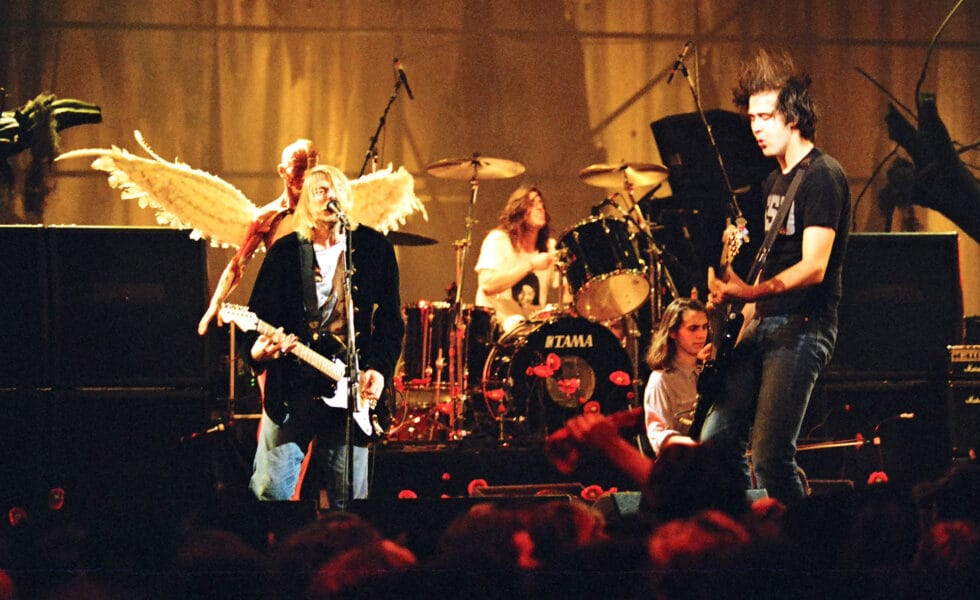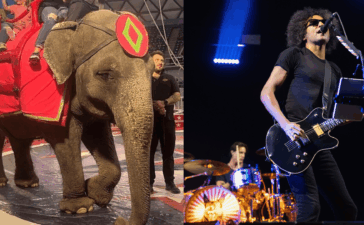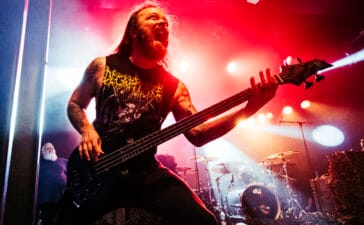Grunge wasn’t built to last. It exploded out of Seattle in the early ’90s, a feral scream from a city drenched in rain and alienation. It wasn’t just music; it was a cultural upheaval, a rebellion wrapped in distortion and drenched in flannel. In a world that had spent the ’80s drowning in excess and neon gloss, grunge was a gut-punch of raw honesty. And for a moment, it was everything.
But grunge’s rapid rise carried the seeds of its own destruction. By the time Nirvana’s Nevermind knocked Michael Jackson off the charts in 1991, the movement had already been commodified. Record labels swarmed Seattle, hunting for the next big thing, and grunge—born from punk’s defiance and metal’s weight—found itself co-opted by the same mainstream machine it sought to reject. What was once visceral and unpolished became a product, sold back to the masses in the form of ripped jeans and prepackaged rebellion.
For the musicians at its core, this mainstream success was both a blessing and a curse. It gave them fame but stripped away the sense of community and authenticity that had defined the scene. Many of its frontmen—Kurt Cobain, Chris Cornell, Scott Weiland, Layne Staley, Mark Lanegan, and Shannon Hoon—succumbed to the pressures of fame and personal demons. Eddie Vedder, Pearl Jam’s enigmatic frontman, remains the last of his peers standing, a torchbearer for grunge’s golden age.
Pearl Jam’s recent Australian tour felt like a reckoning. Vedder’s voice rang out like a survivor’s anthem, raw and weathered, a reminder of grunge’s unpolished glory. But grunge wasn’t just defined by its frontmen. Women like Courtney Love, Kat Bjelland, Donita Sparks, and Kathleen Hanna reshaped the movement, bringing voices that were just as powerful, defiant, and enduring.
While grunge burned out quickly, its legacy continues—not just through memory, but through the music still being made by those who lived it.
Kurt Cobain: The Reluctant Voice of a Generation
Aberdeen, Washington, isn’t a town you dream of conquering the world from. It’s the kind of place that breeds hard lives and harder hearts, where dreams are drowned in drizzle and factory shifts. But Kurt Cobain saw beauty in the broken. Born in 1967, he grew up in a household that unravelled when his parents’ marriage did. That fracture—raw, confusing, and formative—became the defining ache of his life. “I remember feeling ashamed, for some reason,” he once said of his parents’ divorce.
By his teens, Cobain was drifting—bouncing between relatives’ homes, rejected and misunderstood. He found solace in music: first the Beatles, then punk rock’s fiery defiance. Bands like the Melvins showed him that the scrappy, gritty sound of rebellion could thrive even in the suffocating gloom of Washington State. For Cobain, punk wasn’t just music; it was a lifeline.
In 1987, he formed Nirvana with Krist Novoselic, the gangly bassist who shared his love for The Pixies and punk’s underdog ethos. They clawed their way through the Seattle underground, playing dank clubs and recording Bleach, a scuzzy debut album that earned them a cult following. But it wasn’t until 1991’s Nevermind—with its explosive single, ‘Smells Like Teen Spirit’—that they detonated. Cobain was catapulted into superstardom overnight, his pained screams and vulnerable lyrics becoming the voice of a disillusioned generation.
But fame came at a brutal cost. Cobain, who once said “Wanting to be someone else is a waste of the person you are,” found himself becoming someone he didn’t recognise. The world wanted him to be a rock god, a spokesperson, a product. Cobain, in all his bruised honesty, just wanted to make music. The media painted him as a tortured genius, and the pressure to live up to that narrative was suffocating. Adding to the chaos was his relationship with Courtney Love—a whirlwind of passion and volatility that the tabloids turned into a spectacle.
Cobain’s heroin use spiralled as he sought to numb both his physical pain—caused by a debilitating stomach condition—and the emotional torment of being misinterpreted by the world. The man who wrote “I’m so happy because today I’ve found my friends—they’re in my head” in ‘Lithium’ was drowning, and no one knew how to save him.
In March 1994, Cobain overdosed in Rome, a near-fatal incident later revealed to be a suicide attempt. A month later, he retreated to his Seattle home, leaving behind a note that read, “It’s better to burn out than to fade away.” On April 5, 1994, Cobain took his life, joining the 27 Club and leaving millions shattered. His death wasn’t just the end of Nirvana; it felt like the beginning of grunge’s decline, a sobering reminder of the fragility behind the movement’s power.
Cobain was a paradox—a genius who detested his pedestal, a man who craved connection but recoiled from the spotlight. For me, he’s the voice that made vulnerability feel urgent. Listening to Nirvana still feels like reading someone’s diary: it’s intimate, unvarnished, and fearless. His refusal to be anything but authentic, even when it destroyed him, remains grunge’s most poignant truth.

Chris Cornell: The Voice That Could Shatter the Sky
Chris Cornell’s voice wasn’t just heard—it was felt. Born in Seattle in 1964, Cornell grew up in a large family and found himself battling anxiety from an early age. By his teens, his struggles with depression led him to drop out of school and retreat into isolation. During this period, music became his lifeline. He once said, “Music was always the thing that saved me from myself.”
Cornell’s talent became undeniable when he formed Soundgarden in 1984 with guitarist Kim Thayil and bassist Hiro Yamamoto. The band’s sound—anchored by Cornell’s staggering four-octave range—was a blend of punk energy and Sabbath-esque heaviness. Their first taste of mainstream success came with Badmotorfinger (1991), but it was 1994’s Superunknown that elevated them to icons. Tracks like ‘Black Hole Sun’ and ‘Fell on Black Days’ showcased not only Cornell’s voice but his introspective songwriting.
Despite his success, Cornell struggled with addiction and the weight of expectation. After Soundgarden disbanded in 1997, he spiralled, finding himself in a battle with substance abuse that would last years. He later admitted, “I went through a depression that was really devastating… I didn’t deal with it.” His music during this time, including his solo debut Euphoria Morning, reflected his search for meaning amidst the chaos.
Cornell’s career reignited in the 2000s with the formation of Audioslave alongside members of Rage Against the Machine. Their debut album was a commercial triumph, and for a while, it seemed like Cornell had found peace. Yet the darkness lingered. In 2017, hours after a Soundgarden show in Detroit, Cornell took his life in his hotel room. His passing left the music world reeling, with friends like Tom Morello and Eddie Vedder expressing their devastation.
Cornell’s legacy is monumental. For me, his music is the sound of introspection—the moments when you’re staring into the void and wrestling with who you are. His voice was like no other, but it’s the humanity behind it that lingers most. Listening to ‘Like a Stone’ or ‘The Day I Tried to Live’ feels like a conversation with someone who understands the weight you carry.
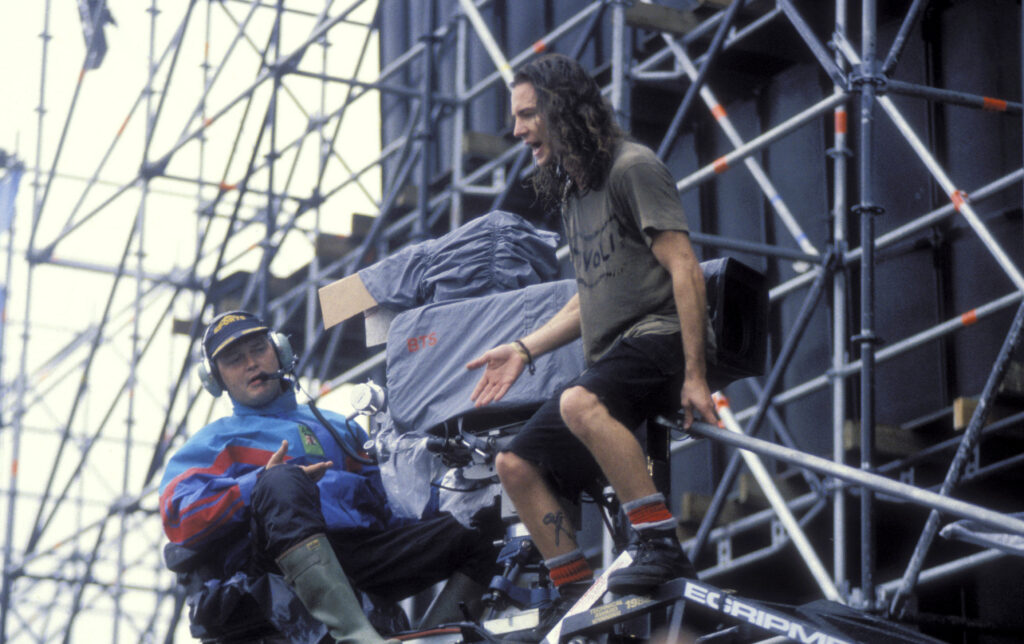
Eddie Vedder: The Last Torchbearer
If grunge has a soul still flickering, Eddie Vedder is its keeper. Born in Evanston, Illinois, in 1964, Vedder’s upbringing was marked by turbulence. He grew up believing his stepfather was his biological dad, a truth he only discovered as a teenager. That revelation fractured his sense of identity, a theme he would revisit throughout his career.
Vedder’s life changed when a demo tape landed in the hands of Stone Gossard and Jeff Ament, who were searching for a singer for their new band. Vedder’s lyrics for what would become ‘Alive’ captured the raw emotion they were looking for, and in 1990, Pearl Jam was born.
Their debut album, Ten, wasn’t just a commercial success—it became a cultural phenomenon. Tracks like ‘Jeremy,’ ‘Alive,’ and ‘Black’ resonated deeply, showcasing Vedder’s ability to turn personal pain into universal catharsis. But as the band rose, Vedder remained fiercely grounded, resisting the trappings of celebrity.
Unlike many of his peers, Vedder navigated fame without losing himself. He was deeply affected by the losses of Kurt Cobain and later Chris Cornell, saying, “When they go, I just don’t want to be here without them.” Yet Vedder carried on, steering Pearl Jam through decades of music and activism. Their recent Australian tour serves as a reminder of grunge’s enduring spirit—and Vedder’s resilience as its last great frontman.
For me, Vedder represents survival without compromise. His voice is both a howl and a whisper, a call to weather life’s storms while holding onto what matters. Tracks like ‘Alive’ and ‘Just Breathe’ don’t just connect—they comfort.
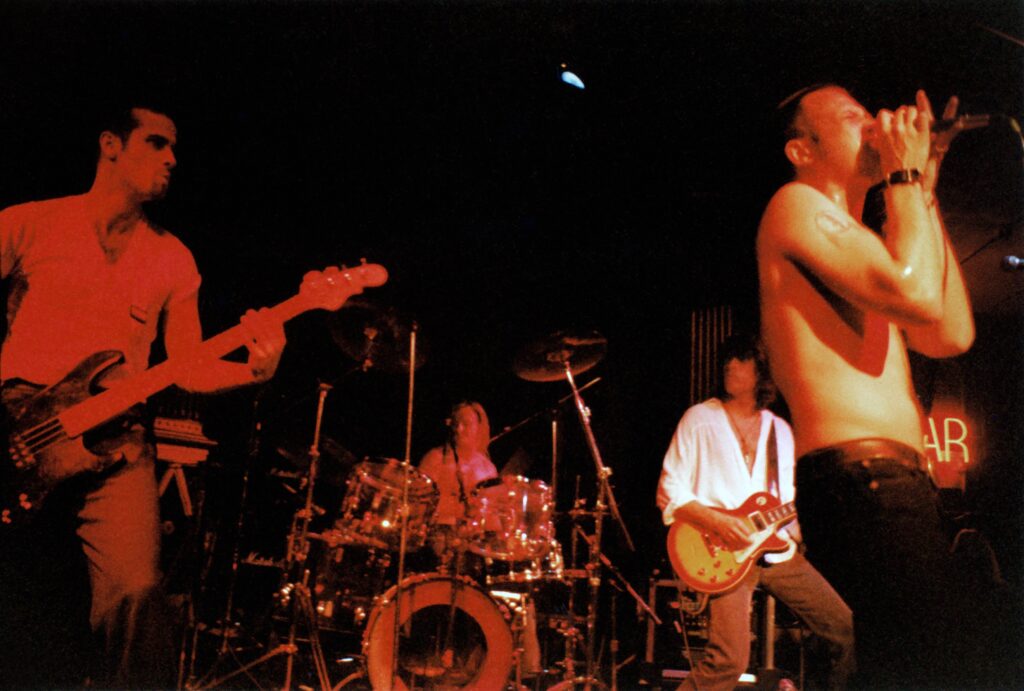
Scott Weiland: The Charismatic Chameleon
Scott Weiland was the ultimate performer—a frontman who could embody glamour and grit in equal measure. Born in 1967 in San Jose, California, Weiland’s early years were marked by trauma, including abuse and addiction, themes that would shadow his career.
Weiland rose to fame as the frontman of Stone Temple Pilots, whose debut album, Core (1992), became a cornerstone of the grunge movement. Tracks like ‘Plush’ and ‘Creep’ showcased Weiland’s ability to blend vulnerability with showmanship. But where many grunge frontmen stayed raw, Weiland brought a theatricality to the stage that set him apart.
Behind the scenes, addiction loomed large. Weiland’s battles with heroin and cocaine often overshadowed his music, leading to public meltdowns, rehab stints, and strained relationships with his bandmates. Despite these struggles, his creativity endured, with STP albums like Purple and Tiny Music… Songs from the Vatican Gift Shop pushing the boundaries of grunge and alt-rock.
Weiland’s story ended tragically in 2015 when he was found dead on his tour bus from an accidental overdose. His death was a stark reminder of the destructive forces that claimed so many of his peers. For me, Weiland’s voice was a paradox: polished yet raw, controlled yet chaotic. Listening to ‘Interstate Love Song’ feels like stepping into his contradictions—a world of beauty and pain colliding.
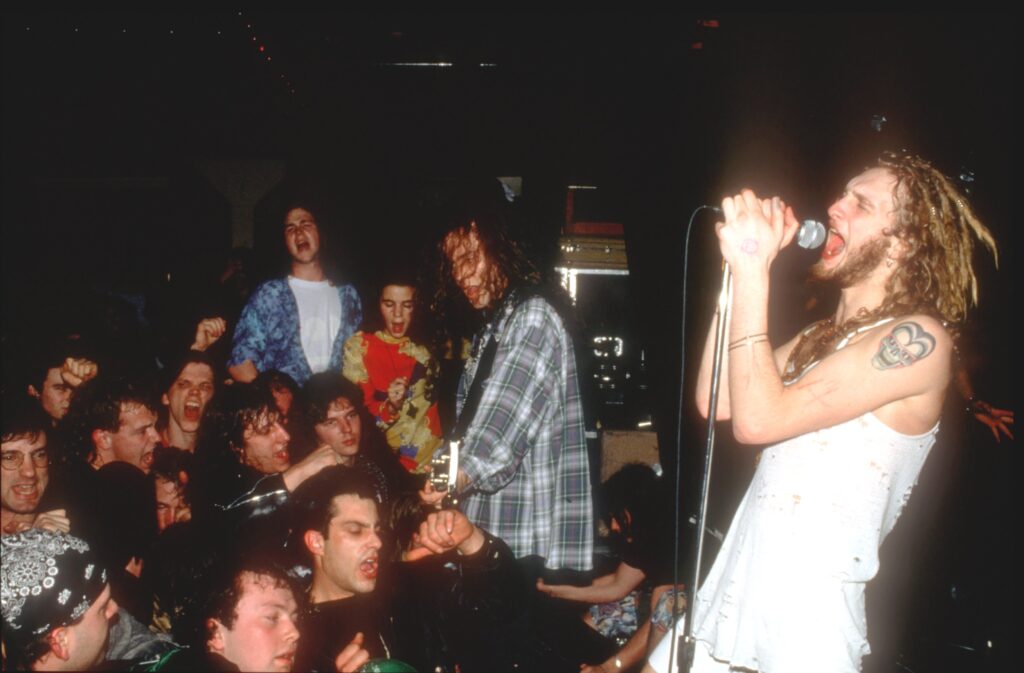
Layne Staley: The Voice of Addiction and Isolation
Layne Staley’s voice was as haunting as his life—a fragile mix of beauty and despair that left an indelible mark on grunge. Born in 1967 in Kirkland, Washington, Staley grew up in a musical family but faced turmoil early on when his parents divorced. The pain of that fracture became a central theme in his life and music.
Staley joined Alice in Chains in the late ’80s, their unique blend of metal and grunge setting them apart in Seattle’s burgeoning scene. Their debut album, Facelift (1990), introduced Staley’s voice to the world—a powerful yet vulnerable instrument that could soar or crawl. But it was 1992’s Dirt that truly cemented the band’s legacy. Tracks like ‘Rooster,’ ‘Would?,’ and ‘Down in a Hole’ explored addiction and alienation with a starkness that was as raw as it was devastating.
For Staley, these weren’t just lyrics—they were confessions. His struggles with heroin began early in Alice in Chains’ rise, and by the mid-’90s, they dominated his life. While the band continued to produce incredible music, including the acoustic masterpiece Jar of Flies, Staley’s health deteriorated. By the late ’90s, he had retreated from the public eye, his addiction and reclusiveness becoming the stuff of tragic legend.
In April 2002, Staley was found dead in his Seattle apartment, two weeks after he had passed away from a heroin and cocaine overdose. He was just 34. His death was a devastating loss, not just for grunge but for music as a whole.
Listening to Staley today is like hearing a ghost—his voice aches with the weight of his struggles. Tracks like ‘Nutshell’ aren’t just songs; they’re windows into his soul. For me, his legacy is one of raw, unflinching honesty, a reminder of both the power and the peril of vulnerability.
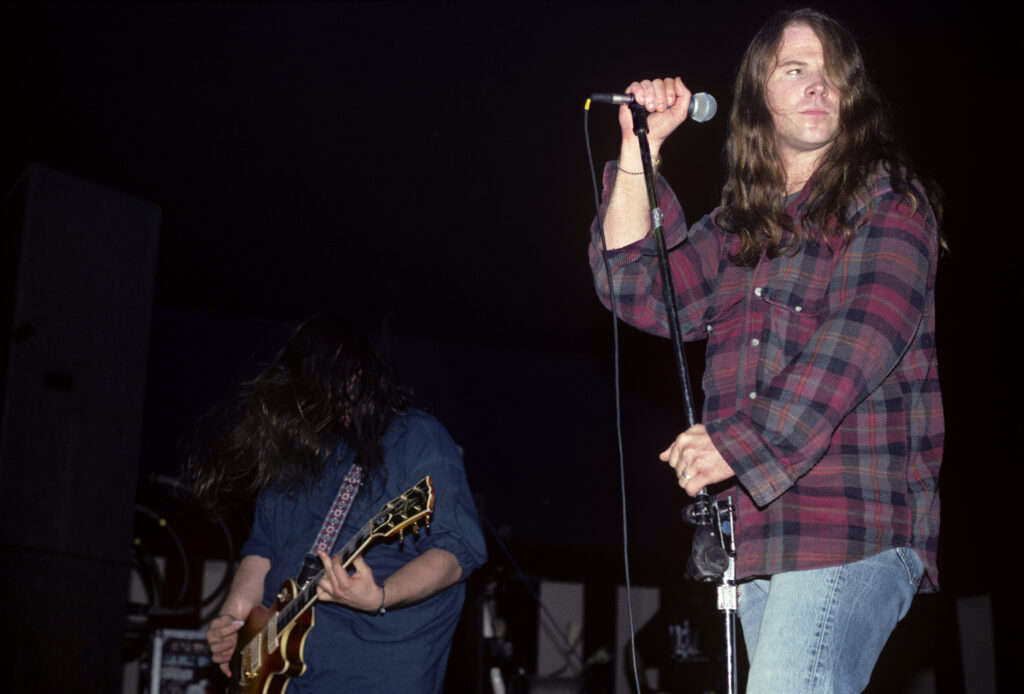
Mark Lanegan: The Gritty Outsider
Mark Lanegan wasn’t just a grunge musician—he was its chronicler, a gravel-voiced poet who lived on the edges of its mainstream success. Born in Ellensburg, Washington, in 1964, Lanegan grew up in a small town with few opportunities. Music, and later writing, became his way out.
As the frontman of Screaming Trees, Lanegan helped shape the early Seattle sound. Their 1992 album Sweet Oblivion became a grunge classic, with tracks like ‘Nearly Lost You’ showcasing Lanegan’s smoky, evocative voice. But Lanegan’s heart lay in his solo work, where he explored themes of addiction, loss, and redemption. Albums like Whiskey for the Holy Ghost revealed a depth that few in the scene could match.
Lanegan battled addiction for much of his life, cycling through heroin, crack cocaine, and alcohol. In his memoir Sing Backwards and Weep, he recounts near-death experiences and the friends he lost along the way. Despite his struggles, Lanegan never stopped creating, collaborating with artists like Queens of the Stone Age and maintaining a prolific solo career.
Lanegan passed away in 2022, leaving behind a body of work that spans decades. For me, Lanegan’s voice feels like the very essence of grunge—gritty, raw, and weathered by life. Listening to him is like stepping into a dark bar at closing time, every note heavy with memory.
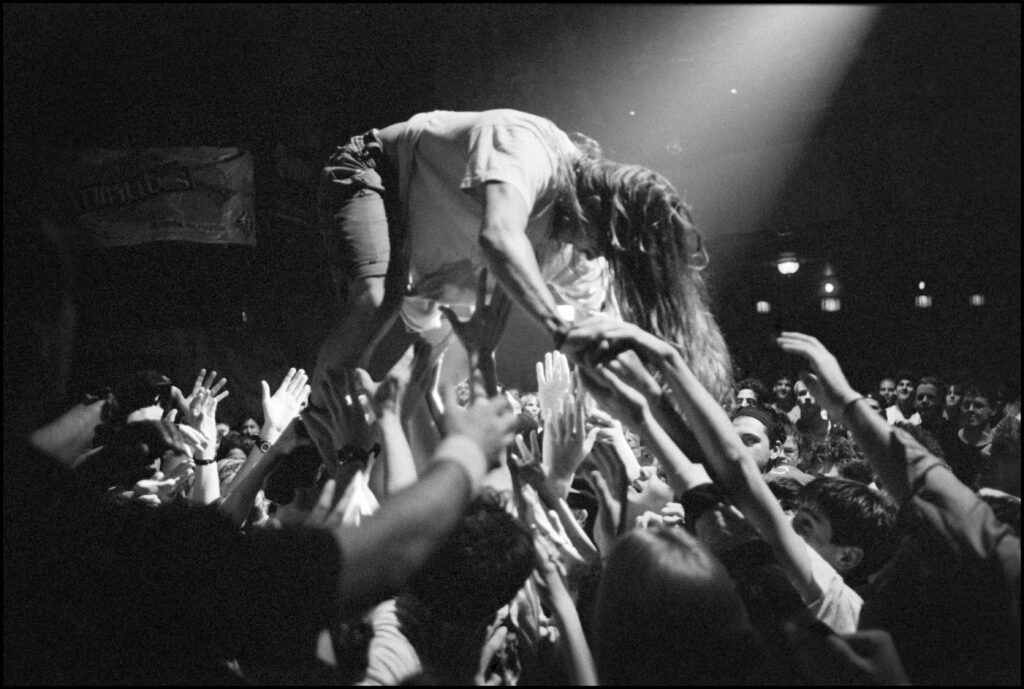
Shannon Hoon: The Soulful Outsider
Shannon Hoon wasn’t from Seattle, but his artistry embodied grunge’s ethos of authenticity and vulnerability. Born in 1967 in Lafayette, Indiana, Hoon grew up with a love for music and a rebellious streak. He found fame as the frontman of Blind Melon, a band whose folky, psychedelic sound was a unique counterpoint to grunge’s heaviness.
Blind Melon’s 1992 self-titled debut exploded with the success of ‘No Rain,’ a track as whimsical as it was melancholic. Hoon’s voice carried a rare sincerity, and his lyrics hinted at deeper struggles beneath the surface. But fame hit hard, and by the time the band’s second album, Soup (1995), was released, Hoon was battling addiction.
In October 1995, Hoon was found dead on the band’s tour bus from a cocaine overdose. He was just 28. His death felt like another chapter in grunge’s tragic narrative, a reminder of how quickly the industry could devour its brightest talents.
For me, Hoon’s legacy lies in his ability to blend light and darkness in his music. Tracks like ‘Change’ are both uplifting and achingly vulnerable, a testament to an artist who lived fully, even if only briefly.
The Women of Grunge: Voices That Shaped a Movement
Grunge was born in an era when conversations around gender equality were still finding their footing. For all its rebellious energy, the music industry—like much of the world—was dominated by men. Yet, the grunge community, shaped by punk’s progressive ethos, was fertile ground for women to step into the spotlight.
That doesn’t mean it was easy. Women in the grunge scene still faced the same old obstacles: sexism, dismissal, and the expectation to be quiet in a world that was anything but. But instead of being sidelined, they fought louder and harder, carving their place not just as participants but as architects of the genre.
From Courtney Love’s raw confessions to Kat Bjelland’s feral power, L7’s rebellious anthems, Kathleen Hanna’s unapologetic feminism, and Mia Zapata’s enduring spirit, women didn’t just add to grunge—they reshaped it. They brought depth, complexity, and a visceral authenticity that mirrored the unpolished ethos of the scene.
Grunge wasn’t just about distortion pedals and heavy riffs—it was about voices. And these women made sure theirs were impossible to ignore. Their stories remind us that rebellion knows no gender, and authenticity doesn’t ask for permission.
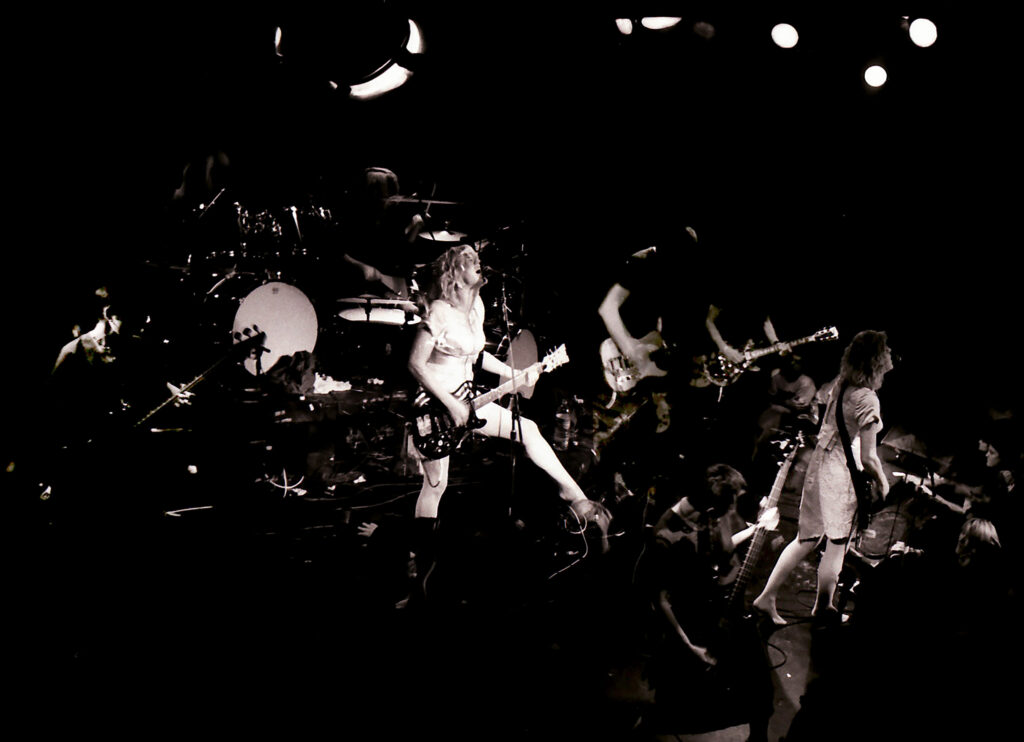
Courtney Love: Grunge’s Lightning Rod
Courtney Love didn’t enter the grunge scene quietly—she stormed in, unapologetic and unfiltered. As the frontwoman of Hole, Love carved out a space that was entirely her own, blending visceral rage with devastating vulnerability. But her role in the movement has often been overshadowed by her personal life, her marriage to Kurt Cobain, and the relentless misogyny of the media. To reduce Love to a caricature of chaos is to miss her profound contribution to grunge and alternative rock.
Born in 1964 in San Francisco, Love’s early life was as tumultuous as her later fame. Raised in a countercultural environment, she bounced between continents and lived on the edges of various music scenes before forming Hole in 1989. The band’s debut album, Pretty on the Inside (1991), was a raw, abrasive statement that established Love as a force to be reckoned with. But it was 1994’s Live Through This—released just days after Cobain’s death—that cemented her legacy.
The album was a triumph of vulnerability and rage, addressing themes of motherhood, fame, and survival with brutal honesty. Tracks like ‘Doll Parts’ and ‘Violet’ showcased Love’s ability to balance searing vulnerability with unrelenting aggression. Critics lauded the record, but Love’s success was often met with skepticism, much of it steeped in sexism. She was accused of riding Cobain’s coattails or being a media manipulator, even as her artistry spoke for itself.
In the wake of Cobain’s death, Love became a lightning rod for public scorn and sympathy, often in equal measure. She channeled her grief into music, with Hole’s 1998 album Celebrity Skin revealing a more polished yet no less biting sound. Behind the scenes, Love battled addiction, legal troubles, and the crushing weight of public scrutiny. But through it all, she remained fiercely creative and outspoken.
For me, Courtney Love embodies the duality of grunge: unpolished and poetic, chaotic and commanding. Her music is both a scream and a confession, demanding to be heard. Love didn’t just survive grunge’s implosion—she emerged as one of its most enduring and polarising figures, proving that women didn’t just belong in grunge; they defined it.

Kat Bjelland: Grunge’s Wild Heart
Kat Bjelland didn’t just play guitar—she attacked it. As the frontwoman of Babes in Toyland, she channelled a primal energy that felt like both a catharsis and a challenge. Born in 1963 in Salem, Oregon, Bjelland grew up rebellious, a trait that fuelled her journey into music. By the late ’80s, she had relocated to Minneapolis, where she formed Babes in Toyland with drummer Lori Barbero and bassist Michelle Leon.
The band’s sound was visceral and unrelenting, a feral blend of punk and grunge that demanded attention. Their debut album, Spanking Machine (1990), laid the groundwork for their cult following, but it was 1992’s Fontanelle that cemented them as pioneers of the scene. Tracks like ‘Bruise Violet’ were as confrontational as they were cathartic, with Bjelland’s voice shifting from a snarling growl to a haunting wail in the blink of an eye.
Bjelland’s performances were legendary. On stage, she was ferocious, often dressed in baby doll dresses juxtaposed with smeared makeup, a subversive play on femininity. Offstage, she was a driving force in a scene that often sidelined women. Babes in Toyland weren’t just a band; they were a statement—proof that women could be just as raw and unfiltered as their male counterparts.
Bjelland’s connection to Courtney Love, whom she briefly played with in a band before Hole, often fueled rumors of rivalry. But Bjelland never let comparisons define her work. She focused on pushing boundaries, both musically and culturally. Her influence extended beyond grunge, inspiring the riot grrrl movement and countless women in alternative music.
For me, Bjelland represents the unapologetic spirit of grunge—untamed, unpolished, and unafraid. Listening to Babes in Toyland feels like standing in a storm, chaotic but exhilarating. She wasn’t just part of the scene; she was its heartbeat.
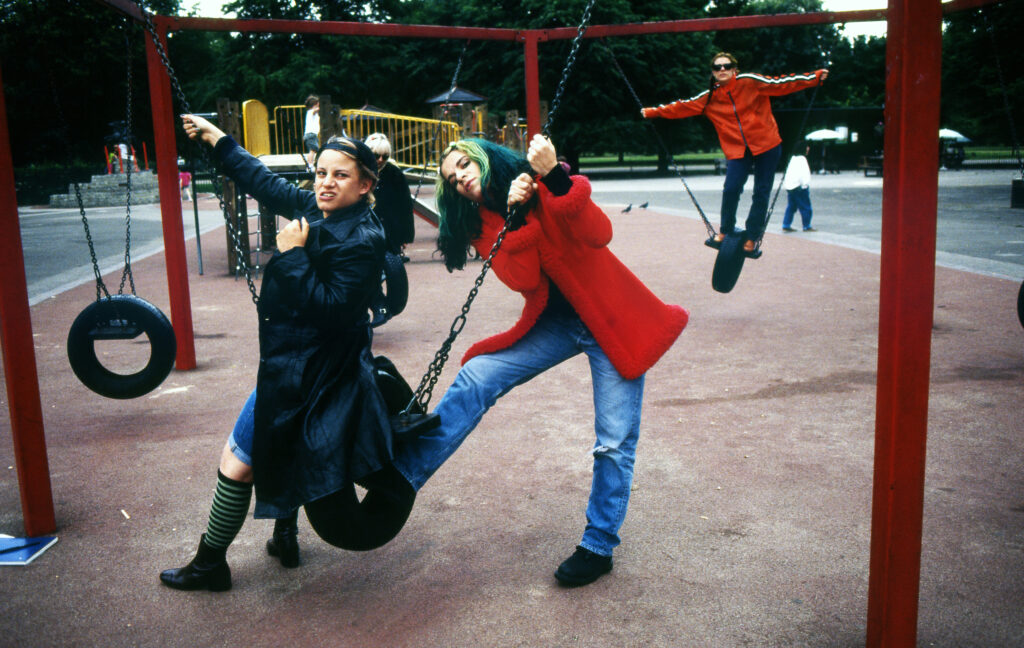
Jennifer Finch & Donita Sparks: Grunge’s Riotous Rebels
L7 were the riotous rebels of grunge—messy, loud, and proudly unrefined. Jennifer Finch and Donita Sparks, the band’s core members, weren’t just musicians; they were provocateurs. Formed in Los Angeles in 1985, L7 fused the heaviness of grunge with punk’s brash irreverence, creating a sound that was both gritty and galvanising.
Their breakthrough came with 1992’s Bricks Are Heavy, an album that balanced massive riffs with biting social commentary. Tracks like ‘Pretend We’re Dead’ became anthems, while deeper cuts like ‘Shove’ showcased their raw edge. But it wasn’t just the music that made L7 icons—it was their attitude.
Sparks was infamous for her fearless on-stage antics, from throwing a used tampon into a crowd at Reading Festival to dropping her pants during a live TV performance. Finch, with her defiant basslines and punk ethos, embodied the band’s take-no-prisoners energy. Together, they confronted the sexism of the industry head-on, often calling out double standards with sharp wit and ferocity.
L7’s activism also set them apart. They co-founded Rock for Choice, a pro-choice benefit concert series that became a platform for political and social issues. Their unapologetic stance on feminism and equality made them heroes to many, even as it alienated more conservative critics.
For me, L7 weren’t just musicians—they were revolutionaries. Their music is a battle cry, their presence a reminder that grunge wasn’t just about angst; it was about defiance. Listening to them feels like lighting a match in a gasoline-soaked room, thrilling and necessary.
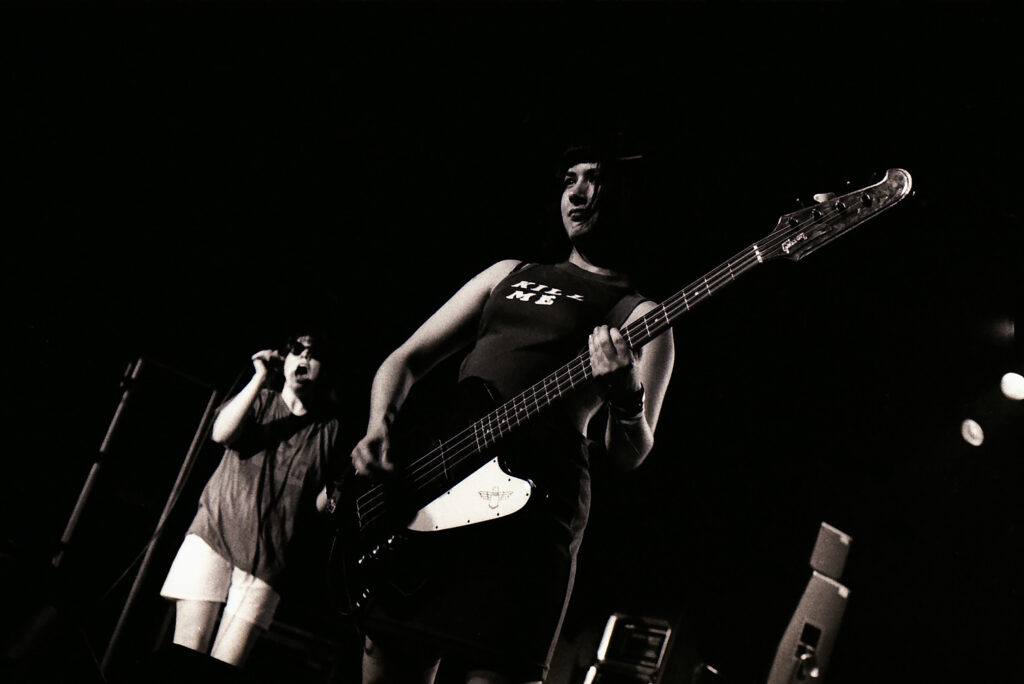
Kathleen Hanna: The Riot Grrrl Revolutionary
Kathleen Hanna wasn’t grunge in the strictest sense, but her riot grrrl ethos ran parallel to the movement, shaping its feminist undercurrent. As the frontwoman of Bikini Kill, Hanna fused punk’s aggression with lyrics that were deeply personal and unapologetically political.
Hanna was born in Portland, Oregon, in 1968, and grew up with a fierce sense of justice. Her music career began in Olympia, Washington, where the DIY punk scene provided the perfect incubator for her ideas. Bikini Kill’s music was raw and confrontational, tackling issues like misogyny, sexual assault, and female empowerment. Tracks like ‘Rebel Girl’ became anthems for a generation of women who had felt sidelined in punk and rock.
Hanna’s zine-writing and activism were equally influential, helping to galvanise the riot grrrl movement and inspiring countless women to pick up instruments and speak out. Though not part of grunge’s core, her work reflected its ethos: raw, real, and unfiltered.
For me, Hanna was grunge’s conscience, pushing the scene to confront its blind spots. Her work reminds us that rebellion is most powerful when it amplifies the voices of the unheard.
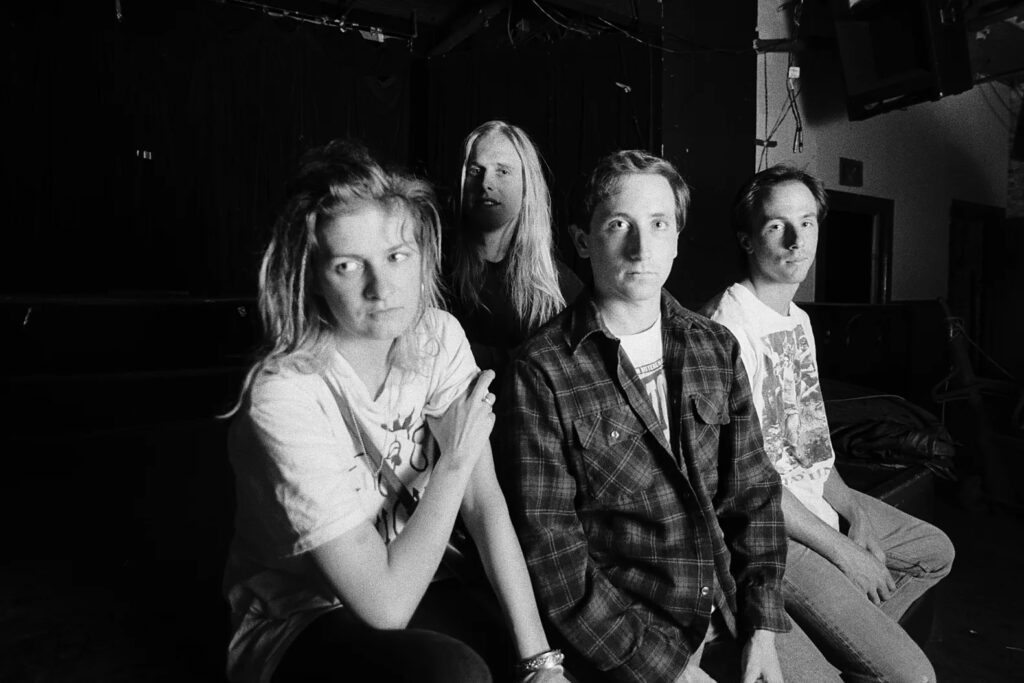
The Gitz, Mia Zapata (Photo by Jackie Ransier)
Mia Zapata: The Lost Voice of Grunge
Mia Zapata was the soul of The Gits, a band that blended punk’s urgency with grunge’s heaviness. Born in 1965 in Louisville, Kentucky, Zapata moved to Seattle in the late ’80s, where her powerful voice and charismatic presence quickly made her a standout in the local scene.
The Gits’ music was deeply emotive, with Zapata’s lyrics tackling themes of heartbreak, resilience, and injustice. Tracks like ‘Another Shot of Whiskey’ and ‘Second Skin’ showcased her ability to convey raw vulnerability with unflinching power. Her voice was equal parts sorrowful and defiant, a reflection of her tenacity.
Tragically, Zapata’s life was cut short in 1993 when she was brutally murdered on her way home from a friend’s house. Her death sent shockwaves through the music community, galvanising efforts to support women in the scene and raising awareness about violence against women. The Home Alive project, which offered self-defense classes and resources, was founded in her memory.
For me, Zapata’s legacy is one of unfulfilled potential but profound impact. Listening to The Gits is a reminder of what was lost, but also of the fire she ignited in those who followed.
Grunge’s Living Legacy
Grunge came and went in a flash, but its impact was seismic. It wasn’t just a genre—it was a reckoning, a moment when music dared to be unpolished, vulnerable, and real. Its frontmen, from Kurt Cobain to Eddie Vedder, and its women, from Courtney Love to Kathleen Hanna, didn’t just define a sound—they ignited a movement that still ripples through music and culture today.
As Pearl Jam wrapped their Dark Matters tour in Australia, Eddie Vedder stood as a poignant symbol of grunge’s enduring power—a living link to its golden era. But the legacy of grunge isn’t carried by one person or one band. It lives on in the countless artists and fans who were inspired by its ethos. From the introspective storytelling in modern indie rock to the unapologetic edge of post-hardcore and alternative metal, grunge’s DNA can be found everywhere.
It also transformed the way music and culture approached authenticity. Grunge told the world it was okay to be imperfect, to embrace vulnerability and find power in flaws. Its aesthetic—raw, stripped-down, and defiantly real—challenged the polished image of the music industry and reshaped how artists present themselves. Today, you can see its spirit in everything from DIY bedroom pop to the heavy distortion of underground punk scenes.
Grunge wasn’t just about its icons—it was about the millions who found a piece of themselves in its music. The women and men who pioneered it—Eddie Vedder, Courtney Love, Kathleen Hanna, and countless others—lit the torch, but it’s been carried forward by everyone who embraced its message of rebellion and self-expression.
Grunge didn’t die—it evolved. Its spirit remains as raw, relevant, and rebellious as ever, not just in music, but in the way we think about art, identity, and the freedom to be unfiltered and real. For those who still feel its call, grunge is more than a sound; it’s a reminder that imperfection is where true power lies.


